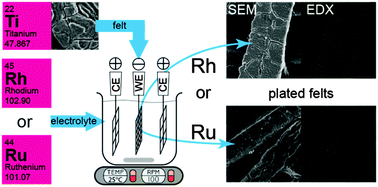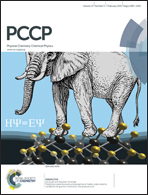Galvanic deposition of Rh and Ru on randomly structured Ti felts for the electrochemical NH3 synthesis
Abstract
Nowadays NH3 is exclusively synthesized by the Haber process. Unfortunately, the energy demand and the CO2 emissions due to H2 production are high. Hydrogen production utilizes precious carbon sources such as coal and natural gas. In the past we proposed an alternative process concept using a membrane electrode assembly in an electrochemical membrane reactor (ecMR). At the anode H2O is oxidized at an IrMMO catalyst to form protons. By applying an external potential to the ecMR N2 is reduced to NH3 at the cathode. Just recently Rh and Ru were identified as possible cathodic electrocatalysts by DFT calculations. We present an easy and highly efficient method for galvanic coatings of Rh and Ru on randomly structured Ti felts to be used in a membrane electrode assembly. Linear sweep voltammetry measurements give a slightly higher activity of Ru for the liquid phase electrochemical NH3 synthesis. The NH4+ concentration reached is 8 times higher for Ru than for Rh. From an economical point of view, Ru is also more feasible for an electrochemical NH3 synthesis process. Such electrodes can now be evaluated in an ecMR in comparison to recently demonstrated Ti-based electrodes.


 Please wait while we load your content...
Please wait while we load your content...